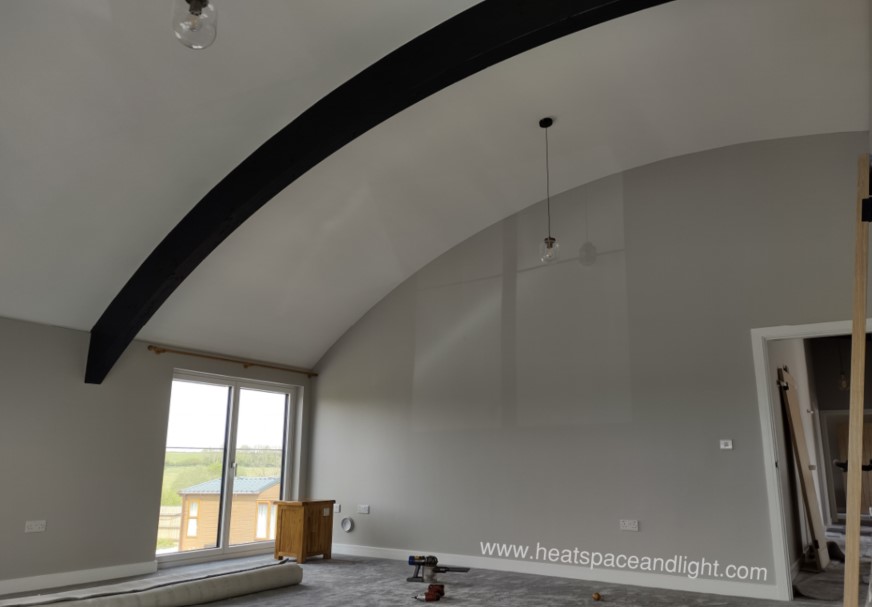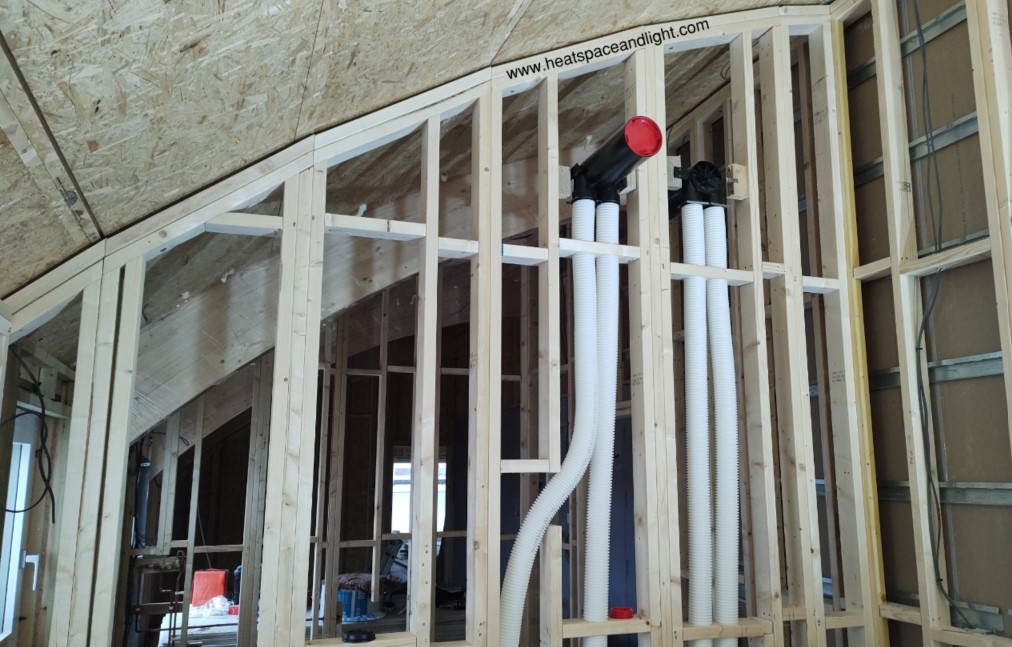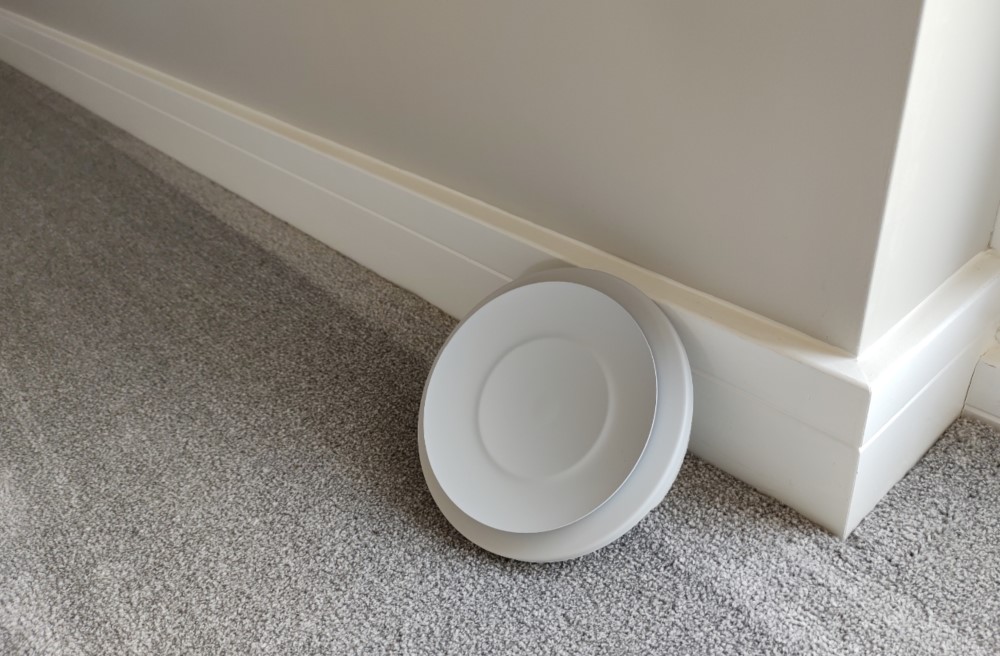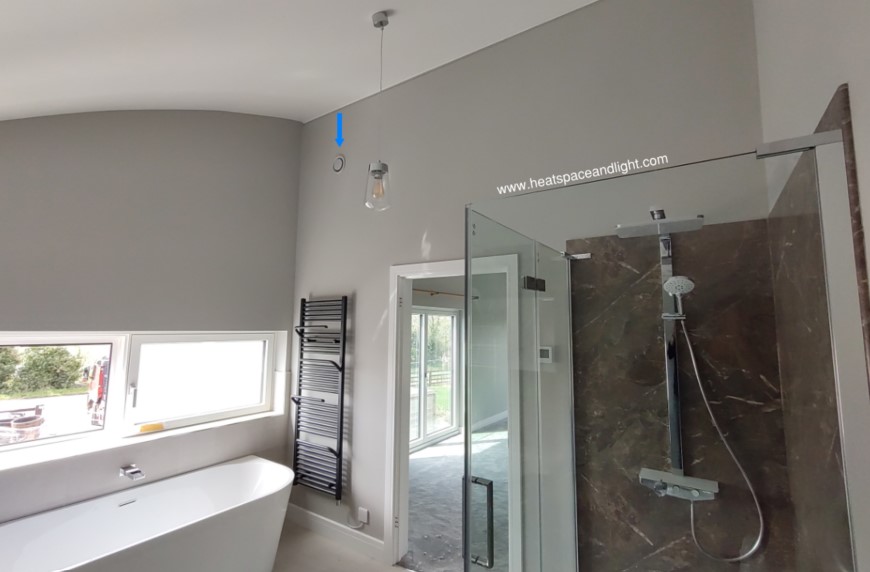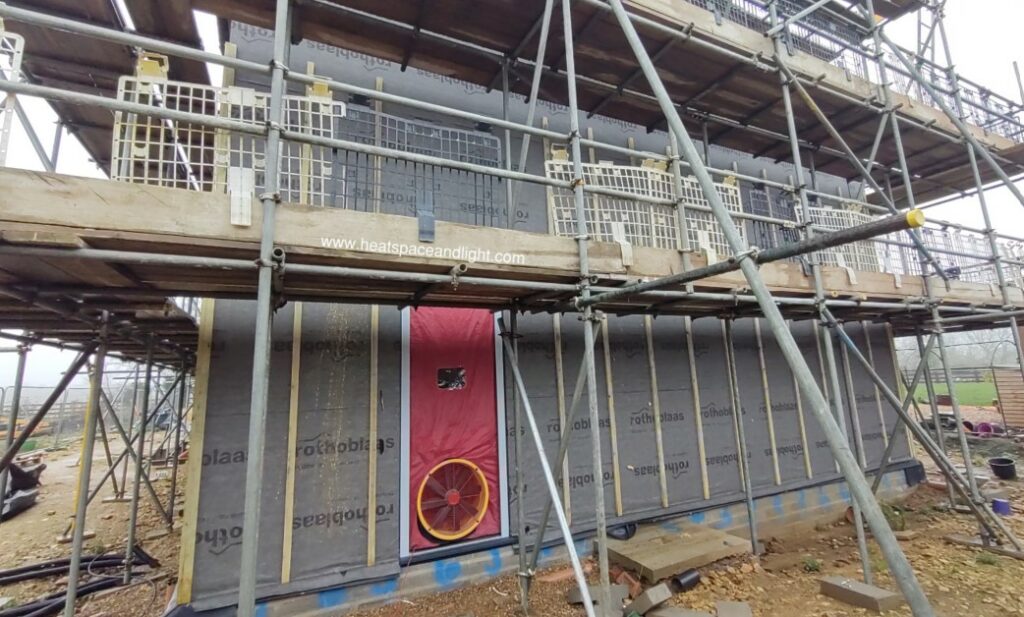Heat, Space and Light Ltd has recently completed the design, supply and commissioning of an MVHR system with cooling via a reversible air source heat pump at a Dutch barn-style new build in Northamptonshire.
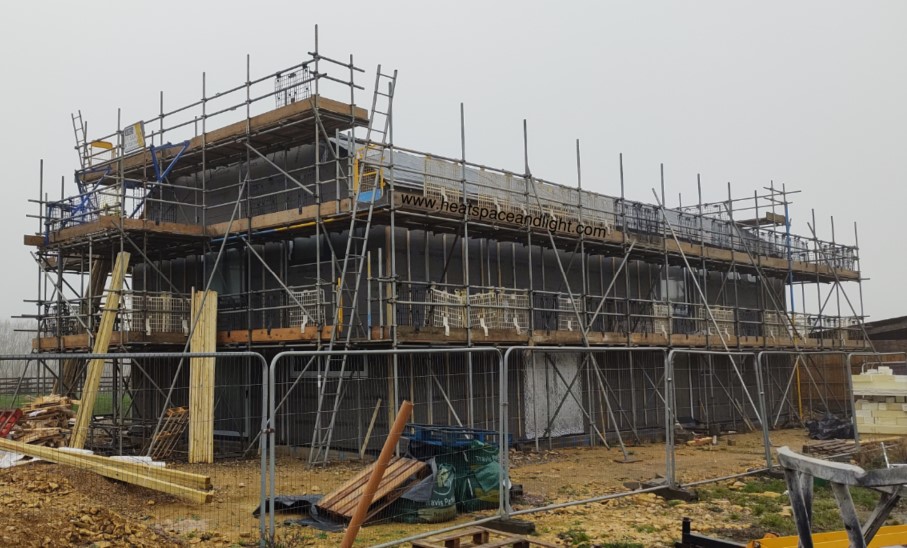
The home has been built with a series of cross-laminated timber beams gently curved to mimic the dutch barn shape.
Now the home is completed, the CLT beams are a beautiful feature of the bedrooms and living areas, providing vast expanses of light. The MVHR ductwork was designed to run so that no ceiling space was lost at all. In the previous image please note how the ducts run at high level within the walls, rather than the ceiling.
Heat, Space and Light supplied the MVHR unit and ducting from Zehnder. It features a post-cooling system on the supply line of the ductwork called the ComfoPost.
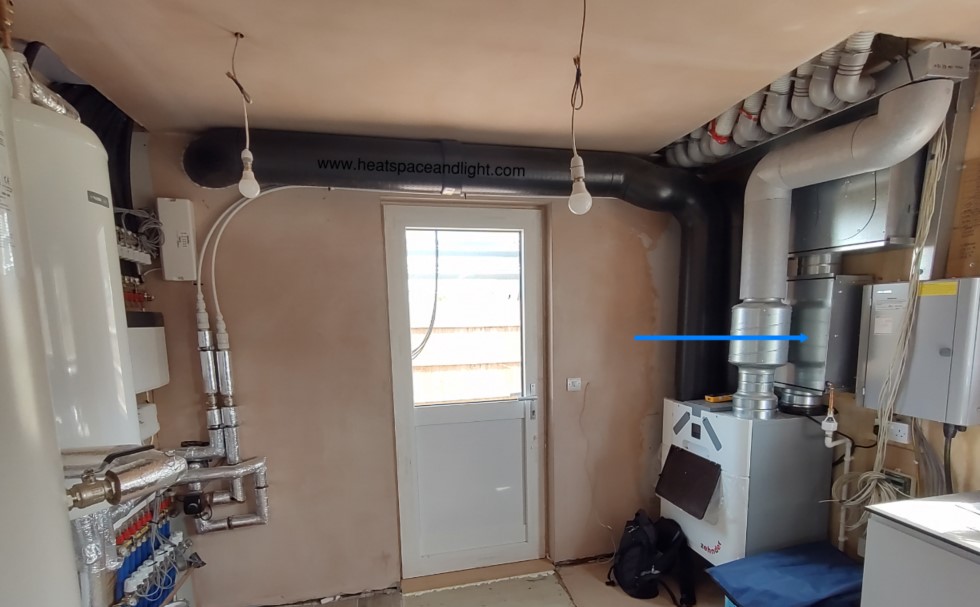
In summer, chilled water will flow through the post-cooler when the air source heat pump measures an external air temperature above approximately 28 degrees celcius. This will gently cool the incoming supply air to all bedrooms and living areas.
At the same time the MVHR can also passively cool the property using its automatic summer bypass mode, which pulls hot, humid air from the bathrooms and kitchen and exhausts it directly outside.
In the plant room the MVHR system is located on one side of the back door and will be boxed into a cupboard. On the other side of the room the air-source heat pump, thermal cylinder and buffer vessel sit.
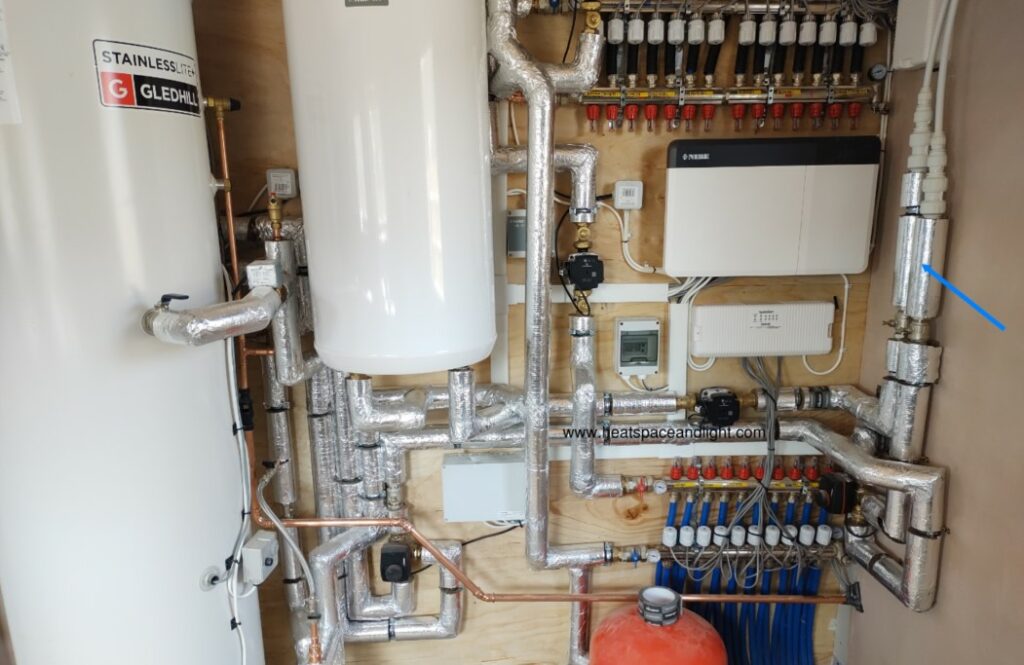
Supply ducts are heavily insulated to ensure that as much of the cold air reaches the rooms as possible.
A radial ductwork system was used to carry air through the home. Radial ductwork is strong and airtight as there are no joints in the system.
The ducting was 90mm external diameter and able to be run in non-structural stud walls, limiting the impact on spacing of rooms, allowing them to be vaulted and full height to the stunning cross-laminated timber beams above.
The home-owner powder-coated the steel supply valves a beautiful light violet colour to better hide the valves.
Extract valves removing warm, humid air from bathrooms are located at high level above showers. As they are painted the background colour of the walls the MVHR valves are very unobtrusive.
Supply valves providing warm aim in winter and cool air in summer sit at low level in most rooms.
Note, neither of these cooling systems are as powerful as air-conditioning, but they are much quieter, more energy efficient, cheaper to run and generally more comfortable.
Cooling via MVHR is best for homes which have incorporated other strategies to limit the risk of summer overheating, such as external shading, cross-flow ventilation and low thermal mass building fabric. I’ve written more about designing cooling into new builds here.
The home is also incredibly airtight, with Heat, Space and Light Ltd helping with the fabric airtightness strategy and testing the property during and after construction.
The final fabric airtightness level is approaching Passivhaus levels of airtightness at 1 m3hr/m2 @50 Pa, which will result in significant heating savings and protect the home from structural issues and outdoor pollutants such as pollen, insects and carbon dust.
If you’d like to discuss incorporating MVHR into your home please contact us via the web form at the top of the page or send your plans (one file limit) and details here.
